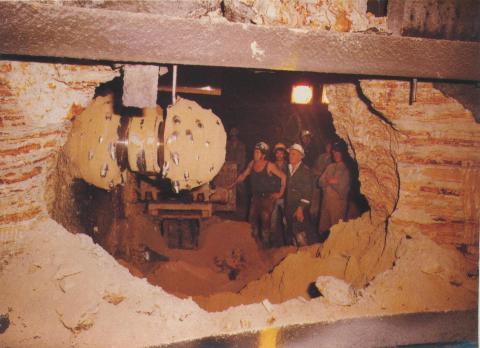A Look Back: Constructing the City Loop

With the City Loop going through a major upgrade, we thought it might be interesting to take a look back at how it all began 46 years ago.
It was 1971 in Melbourne, the cost of a loaf of bread was 24 cents, the cassette tape was the latest and greatest in technology and the Victorian Government began works on what they called the ‘Melbourne Underground Rail Loop.’
The population of the city had risen to two and half million people about half of what it is today and the infrastructure was hard-pressed to keep up.
So the arduous task of tunnelling under the famous streets of Melbourne began. Heavy machinery and manpower slowly carved out the path in which hundreds of people now pass through every day.
One of the men working on the project was Tony Marasco, the father of NJM Group’s General Manager Nicholas Marasco.
Tony Marasco said he is proud to have helped to build the tunnels which so many use today.
“It was hard work, very hard work. I often worked 12 hours a day, seven days a week but we all wanted to get the job done.”
He explained the process involved first boring a hole, bringing the soil out on conveyer belts to be taken away by trucks.
Then concrete moulds were put in to outline the tunnel walls. Metal rings were then installed to strengthen the walls. Followed by laying down the train rails length by length.
“We started at Jolimont Station and ended at Flagstaff.”
Tony explained he worked with construction companies such as the likes of Codelfa Cogefar and John Holland.
Today NJM Group work with John Holland to perform upgrades on train stations around Melbourne as Nicholas continues his father’s work in developing the city’s public transport.
The City Loop was a huge undertaking, which meant to increase the capacity of Melbourne’s rail network. It looked much like the City Loop we know today. But as the city has expanded, so has the need to free up some of the most congested areas.
This can be seen in NJM Group’s involvement in many train station upgrades including Springvale, Cardinia, Lynbrook, Nunawading and Laverton station. The latest being the level crossing removal project at Bentleigh Station.
The first tunnel was supposed to open in 1978, but as with many large projects, this deadline was hard to keep.
It wasn’t until 1981 when the City Loop officially opened and it took a further four years for all the tunnels to be completed, in 1985.
Melbourne is now ready for its second great railway expansion with a new tunnel to divert traffic from some of the busiest lines. The new tunnel will go through the City Loop and will have five new stations.
NJM Group is proud to have a strong history with developing Melbourne’s public transport and plans to continue this development in the future.


Recent Comments